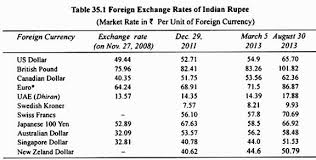
India's external sector position in 2017/18 is broadly consistent with fundamentals and desirable policy settings. India's low per capita income, favourable growth prospects, demographic trends, and development needs justify running CA deficits. External vulnerabilities remain, although they have been reduced since2013. India's economic risks stem from more volatile global financial conditions, oil price volatility, and are treat from cross border integration. Progress has been made on FDI liberalization, while portfolio flows remain controlled. India's trade barriers remain significant.
Exchange rate flexibility should remain the main shock absorber, with intervention limited to addressing disorderly market conditions. Continued vigilance is needed, given potential external shocks. Going forward, further structural reform efforts to revamp the business climate, ease domestic supply bottlenecks, and facilitate trade and investment liberalization are essential to improve competitiveness and investment prospects, attract FDI, and boost exports.
The IMF's 2018 External Sector Report (ESR) shows that global current account balances stand at about 3¼ percent of global GDP. Of this, 40-50 percent are now deemed excessive, i.e. some countries are saving too much, and others are borrowing too much. And while global imbalances remain broadly unchanged in recent years, they have become increasingly concentrated in advanced economies.
From a global perspective, excess surpluses have been especially large and persistent in a small group of countries, most prominently in Germany and China, and to a lesser extent, in Korea, Netherlands, Sweden and Singapore. Excess deficits remain mainly in the United States and the United Kingdom, some euro area debtor countries, and a few vulnerable emerging market and developing economies (e.g. Argentina, Turkey). This finding matters because persistent excess imbalances may become unsustainable, putting the global economy at risk and aggravating trade tensions. They can also make deficit countries vulnerable to sudden reversals of capital flows, when lenders get nervous and pull out their money.
Meanwhile, the IMF added that while China's external position was moderately stronger, the renminbi in 2017 was broadly in line with fundamentals and desirable policies. The fund also stated that China should seek a negotiated settlement to trade disputes that supports and strengthens the international trading system and the global economy.
0 thoughts on “India Exchange Rate Flexibility Needed Should Limit Intervention To Address Disorderly Market Conditions IMF”